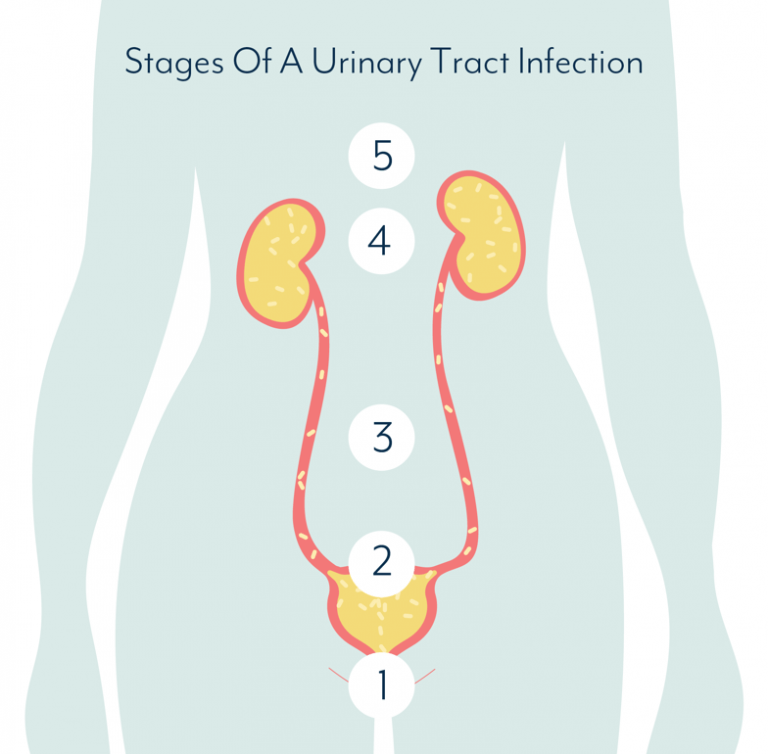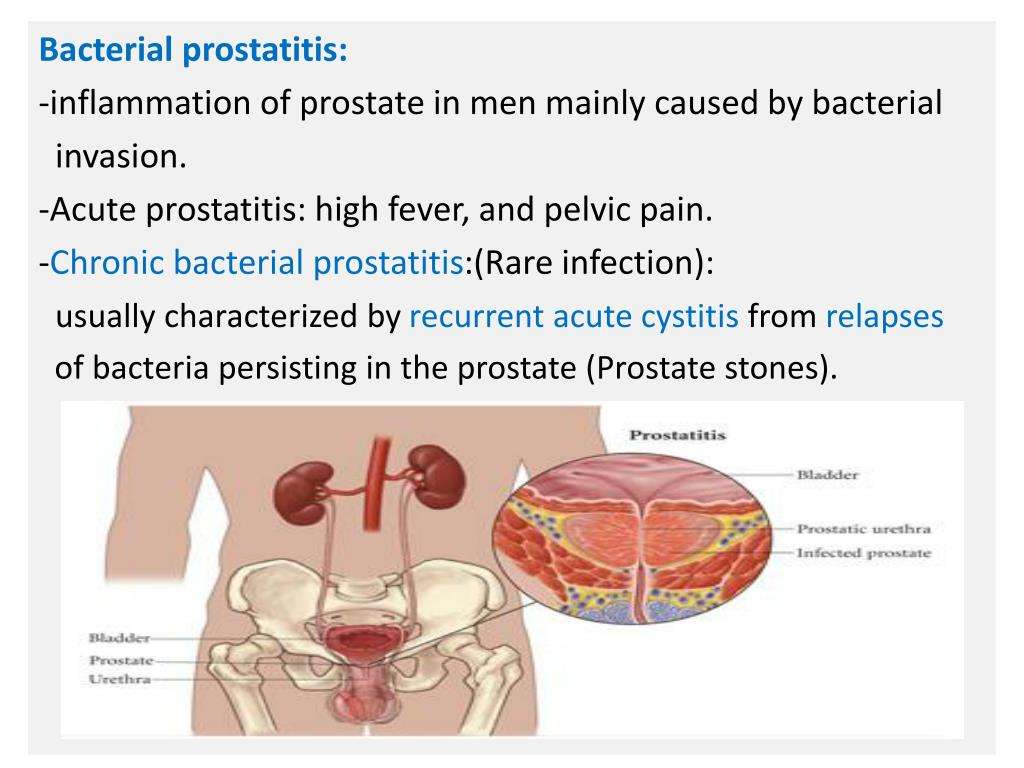Recurrent Urinary Tract Infection In Pregnancy
UTI is the most frequent medical complication of pregnancy. The risk factors of preterm delivery, low infant birth weight and abortions are most commonly associated with symptomatic and asymptomatic bacteriuria during pregnancy.77 In pregnancy, factors that contribute to UTI risk are ureteric and renal pelvis dilation increased urinary pH decreased muscle tone of the ureters, and glycosuria, which promotes bacterial growth. Treatment of asymptomatic bacteriuria in pregnancy reduces the risk of pyelonephritis. As RUTIs are common in pregnancy, they need prophylactic treatment if they occur. Screening for bacteriuria is recommended in all pregnant women at their first prenatal visit and then in the third trimester.82,83 They should subsequently be treated with antibiotics such as nitrofurantoin, sulfisoxazole or cephalexin.21,24,8284 Antibiotic prophylaxis for RUTI in pregnant women is effective using continuous or post-coital regimens. The causative organisms of UTI in pregnancy are similar to those found in non-pregnant patients, with E. coli accounting for 8090% of infections.85,86 Urinary group B streptococcal infections in pregnant women need to be treated and followed by intrapartum prophylaxis.21
Classification Of Urinary Tract Infections
UTIs are classified into 6 categories. The first category is an uncomplicated infection this is when the urinary tract is normal, both structurally and physiologically, and there is no associated disorder that impairs the host defense mechanisms. The second category is an complicated infection this is when infection occurs within an abnormal urinary tract, such as when there is ureteric obstruction, renal calculi, or vesicoureteric reflux. The third category, an isolated infection, is when it is the first episode of UTI, or the episodes are 6 months apart. Isolated infections affect 2540% of young females. The fourth category, an unresolved infection, is when therapy fails because of bacterial resistance or due to infection by two different bacteria with equally limited susceptibilities. The fifth category, reinfection, occurs where there has been no growth after a treated infection, but then the same organism regrows two weeks after therapy, or when a different microorganism grows during any period of time.9,10 This accounts for 95% of RUTIs in women. Bacterial persistence happens when therapy is impaired by the accumulation of bacteria in a location that cannot be reached by antibiotics, such as infected stones, urethral diverticula and infected paraurethral glands. The sixth category, relapse, is when the same microorganism causes a UTI within two weeks of therapy however, it is usually difficult to distinguish a reinfection from a relapse.11
Can I Prevent Recurrent Utis
There are steps you can take to help reduce UTIs. The most basic is to drink plenty of fluids. This encourages frequent urination and helps flush out bacteria.
For women, following good hygiene practices is especially important:
- After a bowel movement, wipe from front to back to reduce the chance of moving E. coli bacteria from the rectal area to the urethra.
- Pee immediately before and after sex.
- Dont douche or use feminine deodorants on your genitals.
- Wear cotton underwear.
For older adults, take care to deal with retention problems, which are especially an issue as you age.
I tell them to double-void urinate and then go back and urinate again, Dr. Vasavada says.
What about drinking cranberry juice to fight UTIs?
Thats one of the most commonly asked questions, Dr. Vasavada says. Theres conflicting data. Its not going to cure an infection, but it could help prevent one, so we dont discourage it.
Read Also: What Tea Is Good For Urinary Tract Infection
Risk Factors For Uti In Children
UTIs occur more often in girls, especially when toilet training begins. Girls are more susceptible because their urethras are shorter and closer to the anus. This makes it easier for bacteria to enter the urethra. Uncircumcised boys under 1 year old also have a slightly higher risk of UTIs.
The urethra doesnt normally harbor bacteria. But certain circumstances can make it easier for bacteria to enter or remain in your childs urinary tract. The following factors can put your child at a higher risk for a UTI:
- a structural deformity or blockage in one of the organs of the urinary tract
- abnormal function of the urinary tract
- vesicoureteral reflux, a birth defect that results in the abnormal backward flow of urine
- the use of bubbles in baths
- tight-fitting clothes
How Many Is Too Many Utis

Three or more UTIs in one year indicates a recurrent infection, according to the ACOG.
Recurrent urinary tract infections are treated with antibiotics. A week or two after you finish the antibiotic treatment, your doctor may perform a urine test to make sure the infection is cured.
Your doctor may also ask you about factors that increase the risk of a recurrent UTI, including:
- Young age at first UTI
Don’t Miss: Does Caffeine Cause Urinary Tract Infections
Why Recurrent Urinary Tract Infections Are Most Common In Older Women
Urinary tract infections are an aggravation at any age, but theyre most common in older women. For senior women, UTIs can cause serious health problems and may not come with the usual symptoms.
At Alpenglow Gynecology, we help patients of all ages in Littleton, Colorado, treat the uncomfortable symptoms associated with UTIs. Rickie Guida, WHNP-BC and our entire care team are committed to helping older women understand and treat UTIs before they cause lasting damage. We offer a comprehensive line of womens health services to help you feel your best at every age.
What Are Common Symptoms Of Chronic Kidney Disease In Children
While the symptoms may vary from child to child, there are some common ones that occur once CKD progresses. Some of these are as follows:
1) Loss of appetite and fatigue2) Puffiness or swelling around eyes, feet and ankles3) Prolonged bed-wetting or frequent urination in children who are five years or older4) Poor growth in comparison to other children of the similar age group5) Chronic nausea6) Severe and frequent headaches7) Conditions of anaemia due to decreased red blood cell production
Also Check: Petsmart Purina One Urinary Tract
Youre Using Certain Methods Of Birth Control
When it comes to UTI prevention, not all birth control methods are created equal. Luckily, only one method is associated with UTIs: a diaphragm.
Because of where the diaphragm sits, it puts pressure on the urethra, which might lead to an increased risk, says Minkin. The good news? There are plenty of other great birth control options.
Reframing A Diagnosis Of Interstitial Cystitis
We shouldnt think of IC as a specific condition, after all, those who have been diagnosed with it experience a vast range of different symptoms. And a cause for the onset of those symptoms has not been identified.
Instead, we should think of the term as a placeholder, while we wait for a specific cause to be identified.
A diagnosis of exclusion leaves a lot of room for misdiagnosis. Some researchers now believe the insensitivity of standard testing methods may have led to large numbers of unnecessary diagnoses of IC.
| “…if the test is negative, the sensitivity is such that there is no justification for claiming you do not have an infection… if the culture is negative it is again wrong to claim this proves an absence of infection the culture is too insensitive. For these reasons, negative tests are unhelpful and a cause of terrible suffering.” |
And this isnt just theoretical. Hundreds of females previously diagnosed with Interstitial Cystitis that is, the absence of infection have been able to receive better testing that has identified an infection.
With an infection identified these individuals have gained long term treatment that relieves their painful symptoms and has often led to complete resolution of the issue.
Recommended Reading: Royal Canin Urinary Canine Treats 17.6 Oz
You Wipe From Back To Front
Wiping from back to front can transport E. coli, the bacteria thats behind most UTIs, from the rectal region to the urethra. Moral of the story: Always wipe from front to back. Al-Badr A, et al. . Recurrent urinary tract infections management in women: A review.
Institutionalized Older Adults & Catheterized Patients
Similar to other populations, the diagnosis of symptomatic UTI in nursing home residents requires the presence of genitourinary symptoms in the setting of a positive urine culture. In older adults who are cognitively intact, the diagnosis of symptomatic UTI is relatively straightforward. However, nursing home residents often suffer from significant cognitive deficits, impairing their ability to communicate, and chronic genitourinary symptoms , which make the diagnosis of symptomatic UTI in this group particularly challenging. Furthermore, when infected, nursing home residents are more likely to present with nonspecific symptoms, such as anorexia, confusion and a decline in functional status fever may be absent or diminished . In the setting of atypical symptoms, providers are often faced with the challenge of differentiating a symptomatic UTI from other infections or medical conditions. The high prevalence of bacteriuria plus pyuria in this population often leads to the diagnosis of UTI. Although bacteriuria plus pyuria is necessary for diagnosis of a laboratory-confirmed UTI, alone it is not sufficient for making the diagnosis of symptomatic UTI. To date, universally accepted criteria for diagnosing UTI in this population do not exist, making it difficult for providers to distinguish a symptomatic UTI from other conditions in the presence of new nonspecific symptoms.
Also Check: Topical Estrogen For Urinary Incontinence
Urinary Tract Infections In Women
UTIs are common, particularly with increasing age. Women are more likely to get a UTI than men. Nearly 1 in 3 women will have a UTI needing treatment before the age of 24.
In women, the urethra is short and straight, making it easier for germs to travel into the bladder. For some women, UTIs relate to changes in their hormonal levels. Some are more likely to get an infection during certain times in their menstrual cycle, such as just before a period or during pregnancy.
In older women, the tissues of the urethra and bladder become thinner and drier with age as well as after menopause or a hysterectomy. This can be linked to increased UTIs.
During pregnancy, the drainage system from the kidney to the bladder widens so urine does not drain as quickly. This makes it easier to get a UTI. Sometimes germs can move from the bladder to the kidney causing a kidney infection. UTIs during pregnancy can result in increased blood pressure, so it is very important to have them treated as soon as possible.
Women are more at risk of repeated UTIs if they:
- use spermicide jelly or diaphragm for contraception
- have had a new sexual partner in the last year
- had their first UTI at or before 15 years of age
- have a family history of repeated UTIs, particularly their mother
- suffer from constipation
Risk Factors For Recurrent Utis Include:

- Frequent sexual intercourse, which increases the likelihood of bacteria entering the urethra and bladder.
- Using spermicide with or without a diaphragm, as this can harm protective bacteria in the urinary tract that defend against infection.
- Urinary retention or incomplete bladder emptying caused by medications narrowing of the urethra prolapse of the bladder, uterus or vagina neurological conditions or sometimes unknown reasons.
- Vaginal atrophy, which is a postmenopausal condition caused by decreased estrogen levels.
- Genetics, especially the inherited genes that regulate the body’s immune response to infections.
It’s common for some people to have bacteria in their urine but not experience any symptoms. In these cases, no treatment is necessary.
Talk with your health care team if you think you have a UTI. You may need an appointment to discuss your symptoms and collect a urine sample.
You should seek medical attention if you develop a fever, chills, disorientation, or back or side pain. These could be signs of a kidney infection, which requires treatment, or a systemic infection of the bloodstream that requires hospitalization.
Don’t Miss: Home Remedy For Urinary Tract Infection In Goats
What Is A Bladder Infection
A bladder infection is a common condition with upwards of 30% of women experiencing it at least once throughout in their life.
The medical name for bladder infection is Cystitis and it appears when Escherichia coli bacteria enter and travel up the urethra, infect the urine and inflame the internal bladder lining. E. coli is found primarily in the bowel, and lesser so, in the vagina and on the skin between the anus and the vagina . Although fairly sedate in its natural environment of the bowel, E. coli bacteria thrives in urines acidic state.
Bladder infections almost always present after a bacterial infection in the urine. It is the most common type of urinary tract infection , with women being much more prone than men. The onset age is around 40 years, although many women are diagnosed in their 30s.
A womans shorter urethra allows the bacteria to reach the bladder quickly. Additionally, the close proximity of the urethral, vaginal and anal openings make it easy for bacteria to be transferred.
Most women will experience a bladder infection at least once in their lives. While it is painful and annoying, its not dangerous or contagious, and cant be passed on to your partner during sex.
Donât Miss: How To Sleep With Overactive Bladder
You Dont Drink Enough Water
Guzzling H2O will make you go pretty often. And thats a good thing. When you do this, the bacteria gets flushed out before they have a chance to grab hold, Minkin says.
Consider that your cue to make a giant water bottle your BFF. Hooton TM, et al. . Effect of increased daily water intake in premenopausal women with recurrent urinary tract infections: A randomized clinical trial. DOI: 10.1001/jamainternmed.2018.4204
You May Like: Royal Canin Urinary So Canned Food
Reasons You May Be Getting Recurring Utis
Posted on by Cleveland Urologyin Female Urology, Urinary Tract Infection
A UTI is an infection in any part of your urinary tract. Having one UTI is painful enough, but having them come back can be quite frustrating. If you get three or more of these infections within a year, this recurrence is known as chronic. However, the reasons you may be getting recurring UTIs might surprise you. Time to find out why and what to do about it.
Confusion Alone Does Not Signal A Urinary Tract Infection
When an older adult becomes confused, many people both medical and non-medical assume that a UTI is responsible.
But aging increases the incidence of confusion and delirium, especially among those who are cognitively impaired, depressed, malnourished or completely dependent.
Delirium can be caused by various factors, the most common one being dehydration, notes Dr. Lathia.
Also Check: Why Am I Prone To Urinary Tract Infections
How Are Urinary Tract Infections Diagnosed
Your doctor will use the following tests to diagnose a urinary tract infection:
- Urinalysis: This test will examine the urine for red blood cells, white blood cells and bacteria. The number of white and red blood cells found in your urine can actually indicate an infection.
- Urine culture: A urine culture is used to determine the type of bacteria in your urine. This is an important test because it helps determine the appropriate treatment.
If your infection does not respond to treatment or if you keep getting infections over and over again, your doctor may use the following tests to examine your urinary tract for disease or injury:
- Ultrasound: In this test, sound waves create an image of the internal organs. This test is done on top of your skin, is painless and doesnt typically need any preparation.
- Cystoscopy: This test uses a special instrument fitted with a lens and a light source to see inside the bladder from the urethra.
- CT scan: Another imaging test, a CT scan is a type of X-ray that takes cross sections of the body . This test is much more precise than typical X-rays.
Treatment From A Gp For Utis That Keep Coming Back
If your UTI comes back after treatment, or you have 2 UTIs in 6 months, a GP may:
- prescribe a different antibiotic or prescribe a low-dose antibiotic to take for up to 6 months
- prescribe a vaginal cream containing oestrogen, if you have gone through the menopause
- refer you to a specialist for further tests and treatments
In some people, antibiotics do not work or urine tests do not pick up an infection, even though you have UTI symptoms.
This may mean you have a long-term UTI that is not picked up by current urine tests. Ask the GP for a referral to a specialist for further tests and treatments.
Long-term UTIs are linked to an increased risk of bladder cancer in people aged 60 and over.
You May Like: What Do I Take For A Urinary Tract Infection
What Is The Long
Urinary tract infections are uncomfortable and painful. Most chronic UTIs will resolve with a prolonged course of antibiotics, but monitoring for further symptoms is important since the chronic UTIs usually recur. People with UTIs should monitor their bodies and seek immediate treatment with the onset of a new infection. Early treatment of infection decreases your risk for more serious, long-term complications.
If youre susceptible to recurring UTIs, make sure to:
- urinate as often as needed
- wipe front to back after urinating
Cranberry Juice And Tablets

Cranberry juice and tablets have been shown to reduce RUTIs as they contain a compound called tannin, or proanthocyanidin, which reduces E. coli vaginal colonisation.65,66 Although earlier, smaller studies have shown that consuming cranberry juice or tablets can prevent RUTIs, an updated Cochrane review showed that evidence for its benefit in preventing UTIs is small therefore, cranberry juice cannot be recommended any longer for UTI prevention.21,6769
You May Like: Rx For Urinary Tract Infection